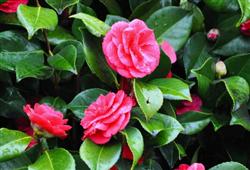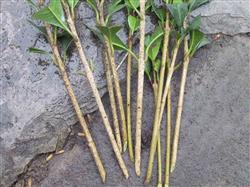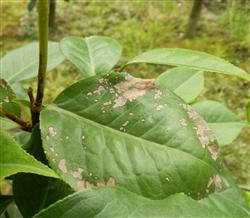What are the diseases and insect pests of camellia that need to be controlled?

What are the diseases and insect pests of camellia that need to be controlled? The pests of camellia include aphids, scale insects, red spiders, rust wall lice, leaf rollers and so on. In addition to rust wall lice, common insecticides can be used to control. The most serious pests are rust wall lice and mites, which are powdery, small and difficult to find, which specially damage the tender shoots of the young leaves of camellia, making the back of the leaves yellow, like rust, and the leaves are twisted and unable to grow new shoots. Through a variety of pesticide control experiments, I think that dicofol and chlorothalonil are the best in the control of rust wall lice. Rust wall lice reproduce most rapidly in high temperature and dry climate, so it is necessary to cool and spray water in the nursery, and cut off the leaves damaged by rust tick lice in time. The leaves or branches of existing scale insects can be removed manually, and medicinal cotton is dipped in alcohol to wipe off the insects. The mountain tea is served in the pot. Flowerpots with mud pots (plain burning pots, tile pots) are appropriate. First pad 4 tiles on the hole at the bottom of the basin, then fill some of the coarse soil, plant the seedlings in the basin, fill the roots with some fine soil, then slowly put the coarse soil all around the basin, gently pat around the basin, press the basin soil by hand, and then put some of the soil flat. (the basin soil should be 4cm lower than the basin mouth for watering. After the seedlings are put on the basin, they should be fully watered for the first time and should be poured slowly until the bottom of the basin is permeable. For example, quick irrigation will cause soil consolidation on the basin surface. New seedlings should be sprayed with foliar water frequently to keep moist, avoid stagnant water in the basin, avoid watering fertilizer, watering should be determined according to climate and basin soil conditions, and the soil should be kept moist. Fertilizers should be watered less or not, but they must be light. For mail-ordered camellia on the basin, 1-2-year-old seedlings, first of all, the root mud or mud block, gently washed off with water, and then on the basin is appropriate, because the seedlings are boxed in order to ensure survival, generally bring some root soil, these soil is very tight in the way of transport pressure, or packing for fear of seedling shaking and root injury and tight, so to clean pine roots, such treatment on the basin, can make fast root survival rate high. Medium and large seedlings of more than three years old should bring soil balls to the basin, otherwise the survival rate will be reduced. If the soil balls have been pressed, you can first soak the soil balls in clean water and pick them up immediately, then gently use bamboo sticks to loosen the topsoil on the surface of the soil balls and then put them on the basin. Potting time: winter November or early spring February-March, the northern region should be at the end of March-early April, there are heat preservation conditions can also be on the basin in winter. Click to get more camellia planting techniques click to get more flowers and trees planting techniques
- Prev

How do camellias grow?
How do camellias grow? Camellia is one of China's top ten traditional flowers, sexual love warm environment, growth temperature is 18-25 degrees, like in the semi-shade, air humidity environment and in the deep summer, fertile, loose, well-drained soil growth, bogey sun, bogey dry. Cutting...
- Next

How to control camellia withered branch disease and flower rot?
How to control camellia withered branch disease and flower rot? Please introduce the methods for the control of camellia branch blight and flower rot by referring to the following methods: the withered branch disease is caused by pathogenic fungi infecting camellia twigs or old branches, the damaged branches are necrotic, the leaves change from green to yellowish, and gradually dry up and fall off from the top down. Finally.
Related
- Fuxing push coffee new agricultural production and marketing class: lack of small-scale processing plants
- Jujube rice field leisure farm deep ploughing Yilan for five years to create a space for organic food and play
- Nongyu Farm-A trial of organic papaya for brave women with advanced technology
- Four points for attention in the prevention and control of diseases and insect pests of edible fungi
- How to add nutrient solution to Edible Fungi
- Is there any good way to control edible fungus mites?
- Open Inoculation Technology of Edible Fungi
- Is there any clever way to use fertilizer for edible fungus in winter?
- What agents are used to kill the pathogens of edible fungi in the mushroom shed?
- Rapid drying of Edible Fungi

